I’m living proof that Japanese people love to eat.
Guilty as charged!
But even in the sushi-obsessed country of Japan, Osaka is the ultimate food hotspot.
From fugu stews and yakiniku feasts, to savory pancakes and deep-fried snacks, you name it, they’ve got it.
Below are five specialties—mostly famous, others controversial—that promise an adventure-filled food trip to remember.
Let’s dive in!
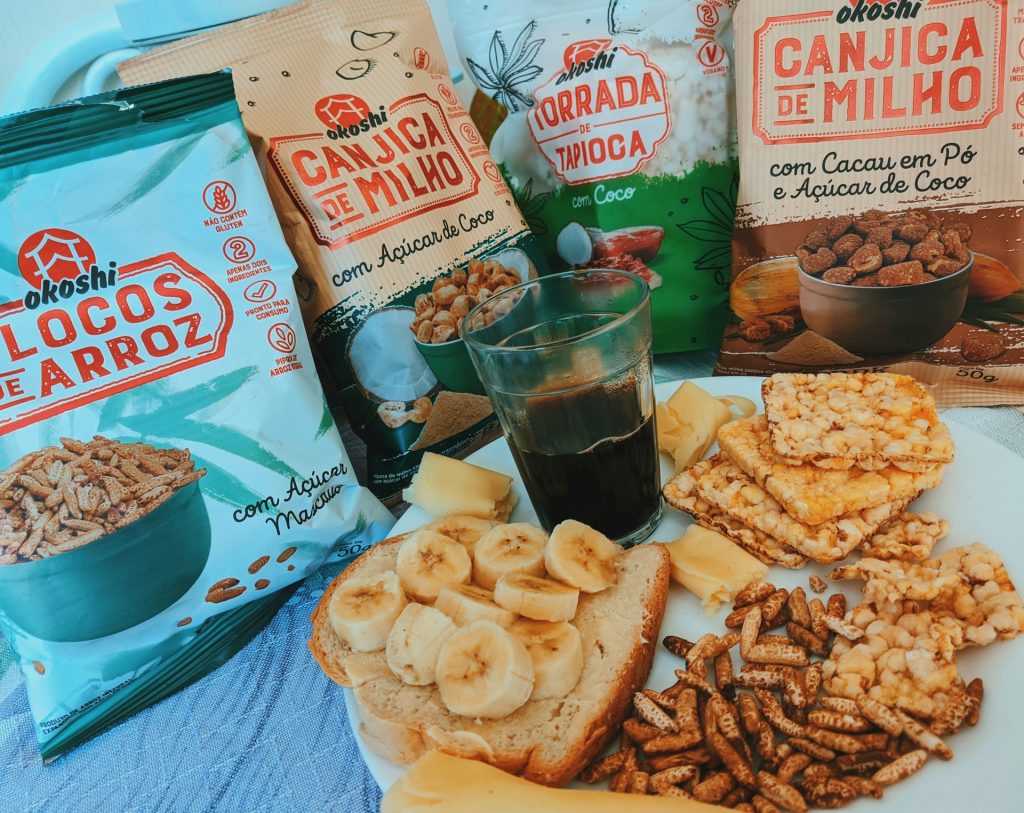
Okoshi
With eight long centuries of history, okoshi is a representative Osakan treat that was once a symbol of fortune during the Edo Period.
It’s made by coating dried puffed rice in mizuame (starch syrup), forming Asian’s version of cereal bar.
Traditionally, peanuts are added.
But nowadays, versions with ginger, brown sugar, and sesame are everywhere.
Now don’t be confused if you’re offered two kinds, awaokoshi [粟おこし] and iwaokoshi [岩おこし].
You’ll still end up with a delicious treat whichever you choose!
Just know that the latter is a bit harder, and authentic okoshi leans toward the dry side.
Your first bite might feel strange.
But keep an open mind and sample other flavor combinations and you’ll soon realize why this is a well-loved
Different Version of Okoshi
Get handfuls of okoshi at Amidaike Daikoku [あみだ池大黒] on Yotsubashi Street near Amidaike Pond, the same spot it was built on in 1805.
Pon Pon Ja Pon, a modern version of okoshi made with dried fruit and nuts, is also on sale here.
If you made a huge room for dessert, have a bit of everything: granola, chocolate, green tea… your choice!

Okonomiyaki
Part of the joy of food is making it yourself, and then eating it with your loved ones.
You don’t get to do that when traveling unless you’re eating okonomiyaki (お好み焼き).
This savory-sweet pancake uses a wheat flour batter of eggs and shredded cabbage, with different toppings and combinations to choose from.
Its name literally means “what you like,” but most restaurants will offer you a selection of pork belly, octopus, vegetables, or cheese as stuffing.
It is finished with a dressing of sweet sauce, mayonnaise, powdered nori seaweed, and dried bonito shavings. Tip: cut and enjoy it like a pizza!
Michelin Star Okonomiyaki
For a Michelin star experience, head to Okonimayki Mizuno in Dotonbori.
Watch the cooks prepare your pancakes on a huge teppanyaki griddle.
Signature dishes include Mizuno-yaki, made with scallops, oysters, and meat; and Yamaimo-yaki, a flourless version made of grated mountain yam.
And trust me, you won’t have a hard time searching for it.
There’s a long (but fast-moving) queue no matter the time of day. It’s that addictingly good!
If you’ve done your Netflix research, you might be fixated to have it at Fue in Miyakojima Ward.
That’s a wonderful option too since Izakaya Toyo, the main feature on Street Food’s Japan episode, is in the same area. Why not visit them both?
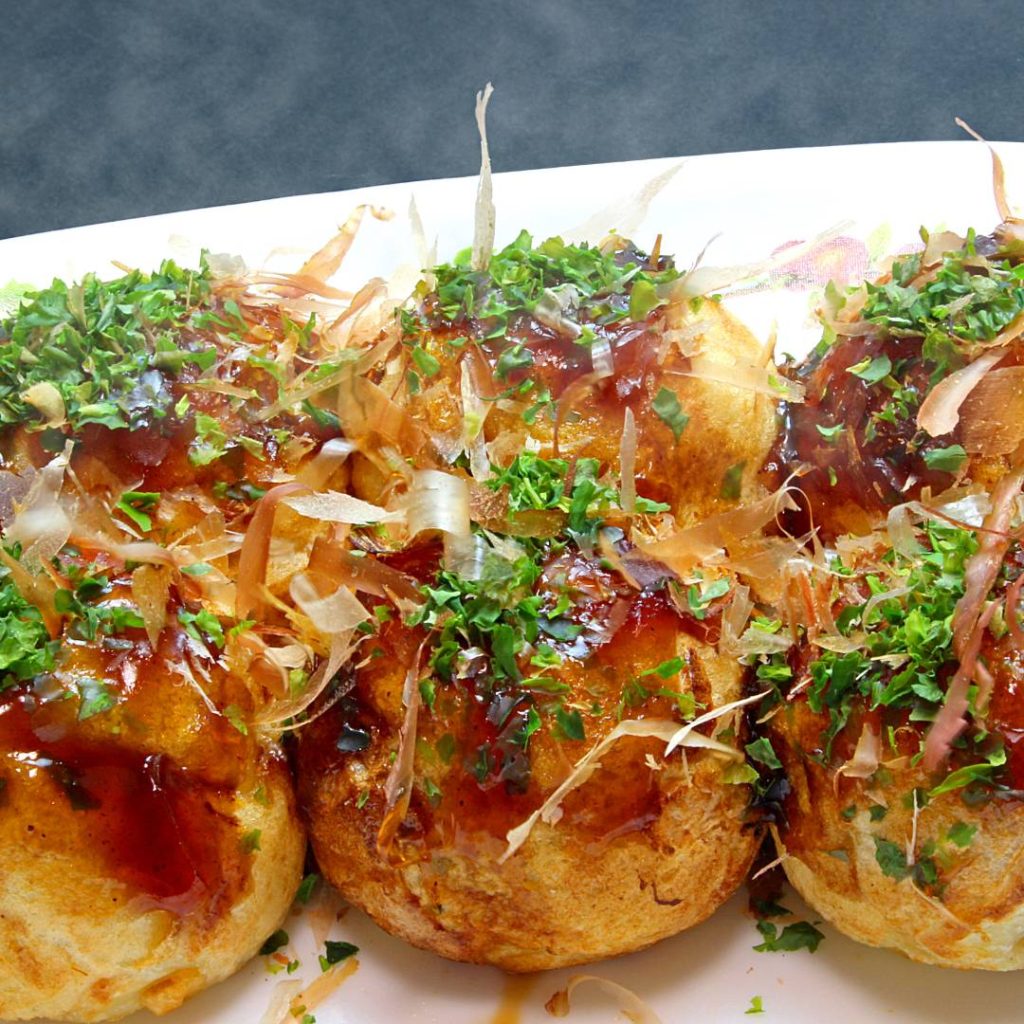
Takoyaki
If you watch anime, you probably know what a takoyaki is.
Most homes in Osaka have these hidden in their pantries, and people usually bring them out during parties.
This ball-shaped snack is packed with bits of octopus (tako), tempura scraps, pickled ginger, green onion, takoyaki sauce, mayonnaise, and bonito flakes.
Frying these dumplings in a mold results in a crispy casing and a tender, almost jelly center.
It’s a fun snack to eat while exploring the city’s lively streets!
Street stalls selling takoyaki are popular all over Osaka.
Some vendors put their own creative spin and replace octopus with cheese, tomato, or even chocolate.
Dotonbori Konamon Museum
You can’t go wrong with the ones sold at Dotonbori Konamon Museum, yes, the one with giant red octopus on its storefront you see in photos.
But if you’re a purist, try the takoyaki at Aizuya, where it was invented after rajioyaki (ラヂオ焼き). Its predecessor is filled with beef tendon, not octopus, and has a more pronounced soy sauce flavor.
You can order takoyaki only, but if you have $7 and a starving company, go big with a set that includes takoyaki, rajioyaki, and akashiyaki.

Fugu
Fugu or Japan pufferfish (河豚) is a luxurious dish that gets a bad rap due to its potent neurotoxin content.
But before you freak out, you should know that this deadly delicious delicacy is only poisonous in the hands of amateurs.
In fact, all fugu chefs are trained for three years before they qualify for a license!
As long as you don’t prepare it in your Airbnb, you should follow Tony Bourdain’s advice and try it if you have the chance.
How to enjoy Fugu
Now that we’ve shaken off our fears, let’s talk about how to best enjoy it: raw.
Traditional fugu presentation is composed of paper-thin slices of sashimi arranged in a floral pattern on a large platter.
Prepared like this, it gives off a light and subtle flavor. But you can also eat it shabu-shabu style, grilled over a charcoal flame, or deep fried as kara-age.
Dried fins of fugu can also be steeped in hot sake as hire-zake (a must-try if you’re a fan of umami!).
You can boast to your friends how you enjoyed fugu bravely (they’ll never know) to the bone!
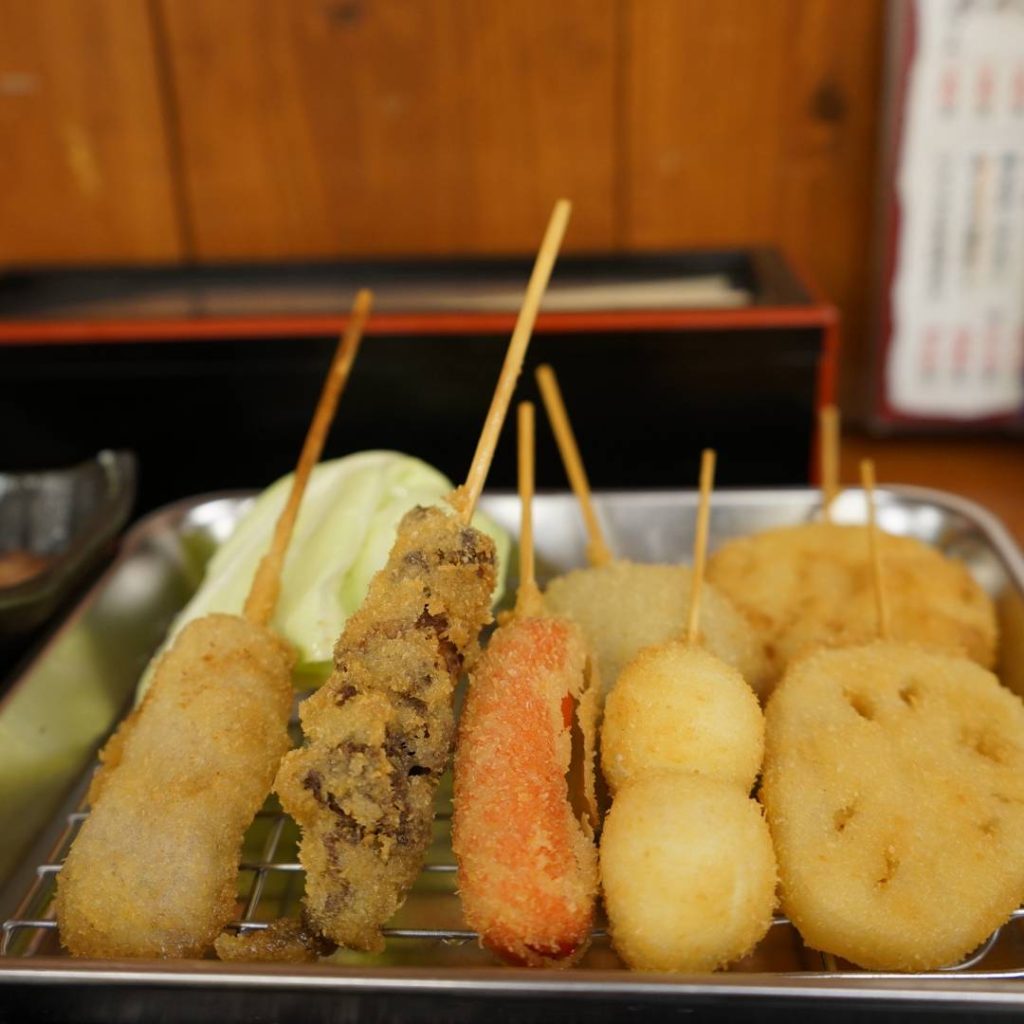
Kushikatsu
Kushikatsu (串カツ) are two things: (1) skewered kebabs of vegetables, meat, or seafood, which are coated in panko and deep fried to crispy golden finish, and (2) the perfect beer pairing at izakayas—or so I am told.
Typical items on a kushikatsu menu include pork, beef, shrimp, onion, pumpkin, sweet potato, lotus root, quail’s eggs, shiitake mushrooms, and asparagus wrapped in bacon.
It is believed that Kushikatsu Daruma (串カツだるま) in the Shinsekai district started the food craze in 1929.
They still serve it today, even in the branches outside of Japan.
You can order assorted kushikatsu skewers or take your pick from the a la carte menu.
Anyway, the icing on the cake is the sauce: a sweet ponzu flavor, similar to Worcestershire sauce but more citrusy.
The crunch you get from frying plus the sweetness create a wonderful eating experience.
Conclusion
Osaka is truly a food lover’s paradise, offering an array of mouthwatering treats that cater to all tastes and preferences.
From the ancient delight of okoshi to the indulgent experience of fugu, the city’s culinary scene is a thrilling adventure for any foodie.
So, if you find yourself in Japan‘s original capital city, don’t miss the opportunity to eat your way through its rich and diverse gastronomic delights.
So would you dare eat fugu in this lifetime? Tell me why or why not in the comments section below!
For more trip-planning hacks and food guides, check out my Travel posts.


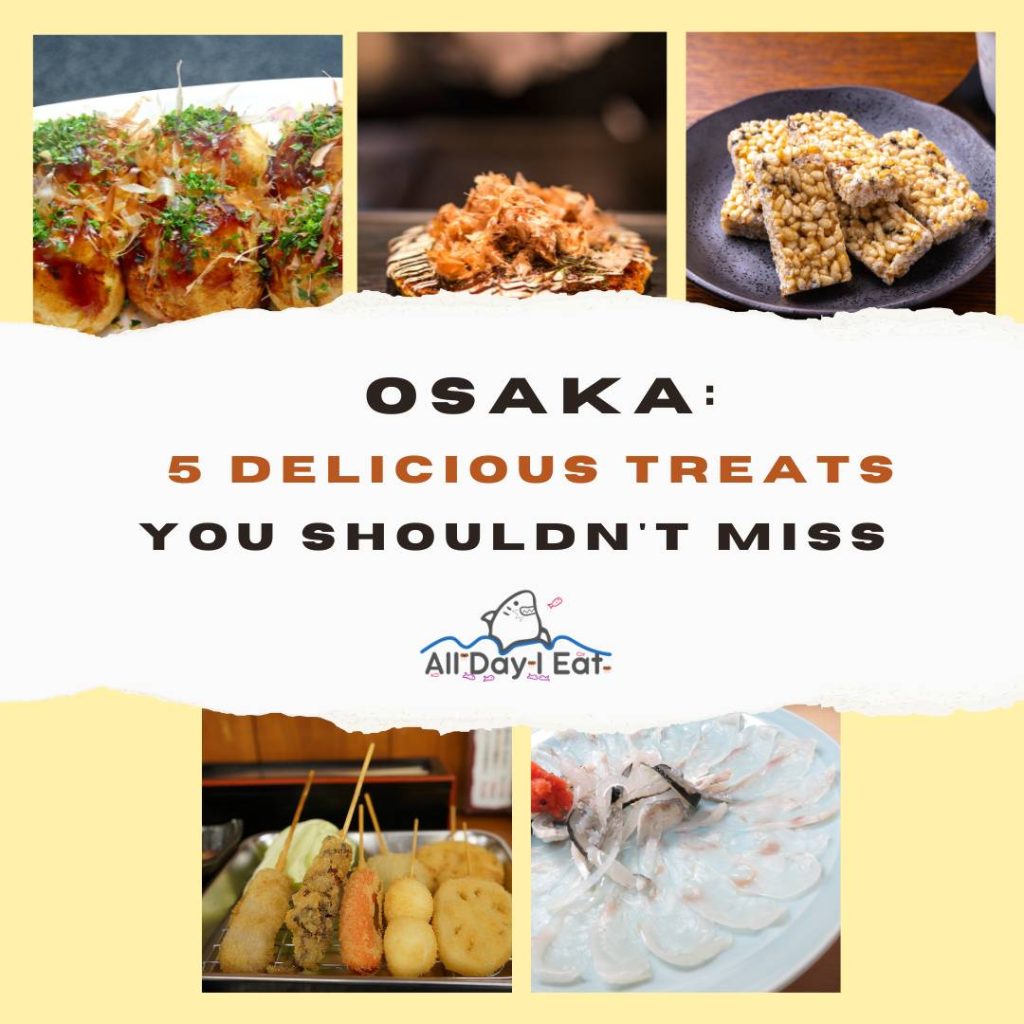





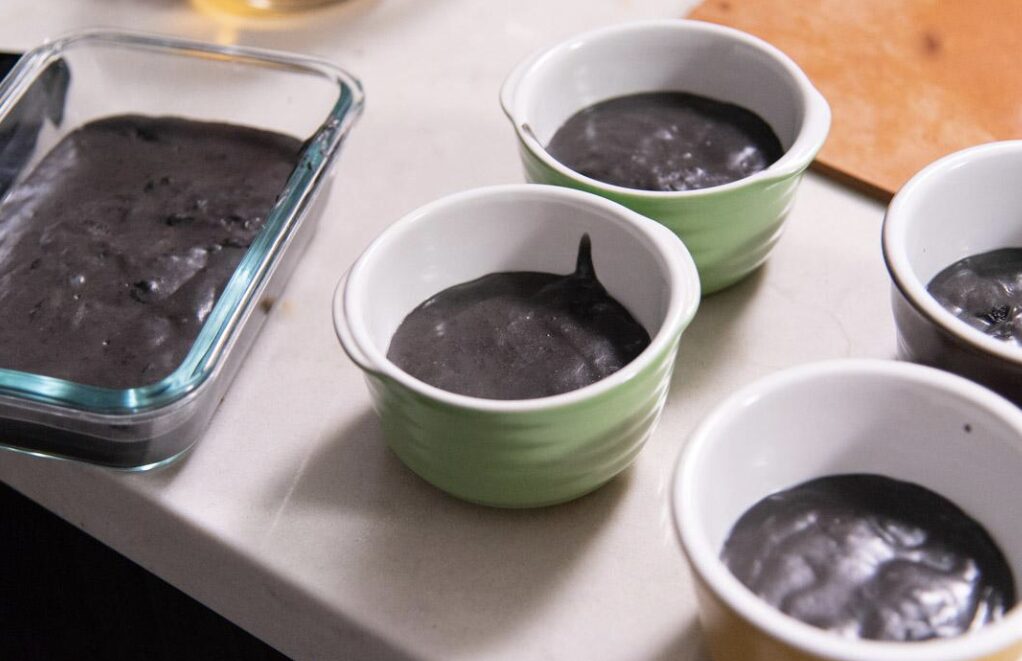
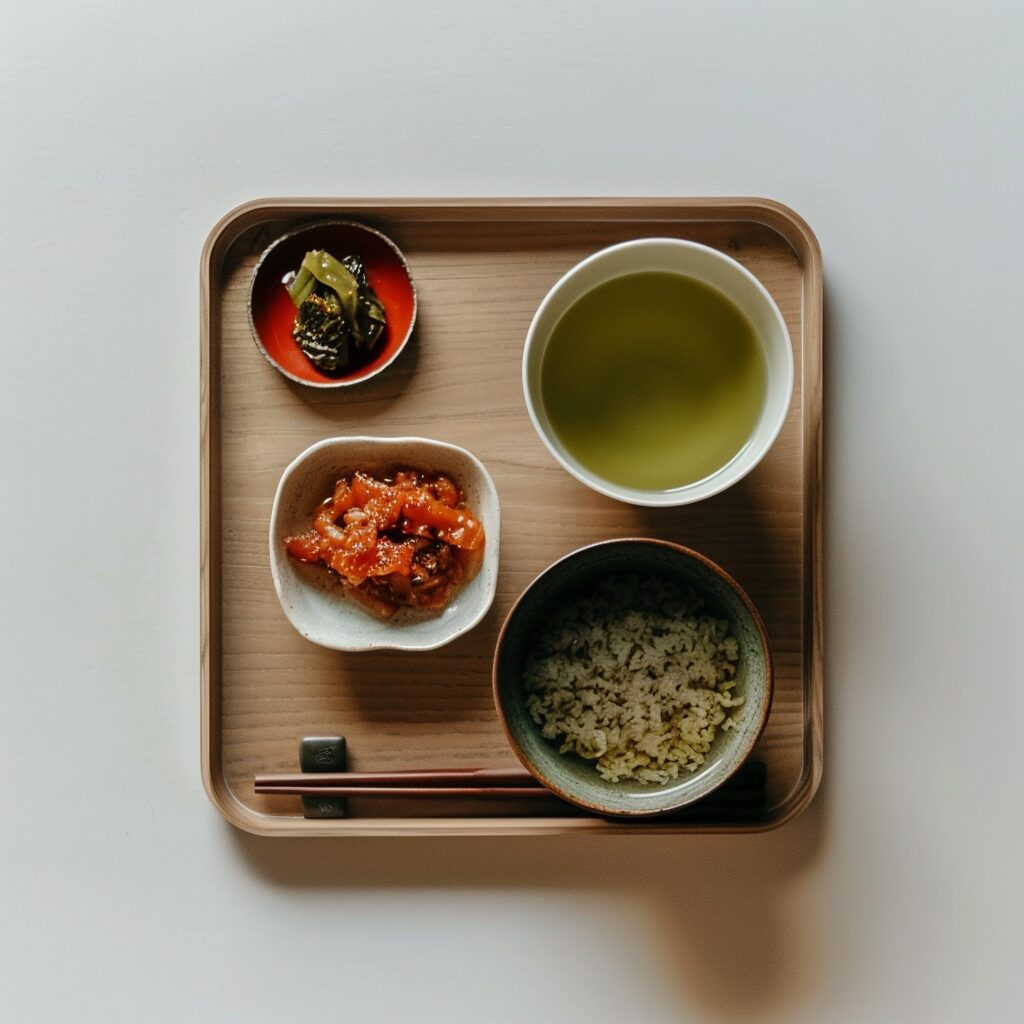
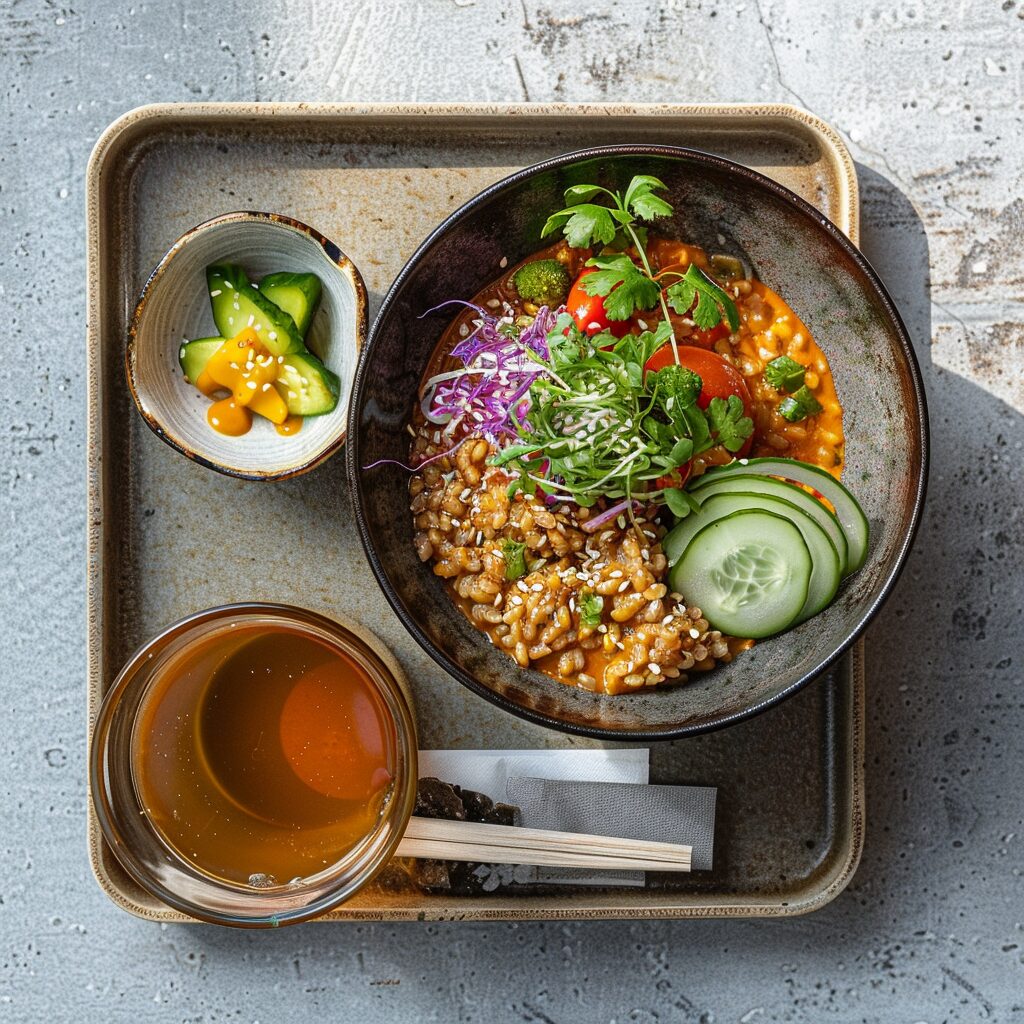
Konnichiwa! (Hello!) I'm Pat Tokuyama, a Japanese tofu cookbook author, who travels for music, food, and adventure. If you like Japanese tea, checkout some of the newestorganic japanese tea, matcha bowls and noren and more!
** Curious about the Plant Based Japanese Cooking Club? ** Learn more here!